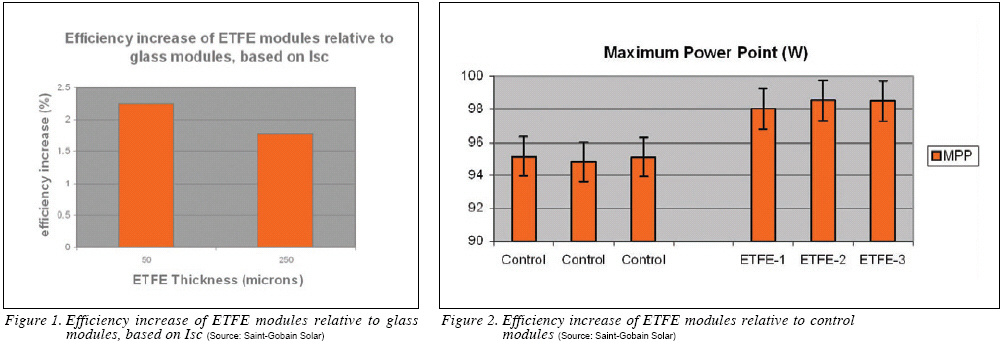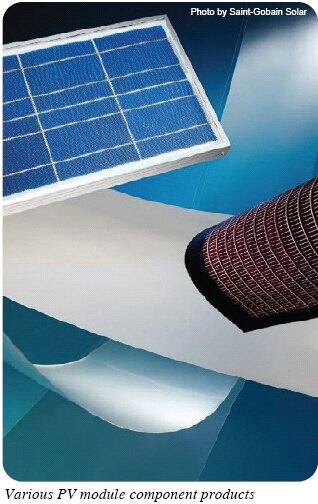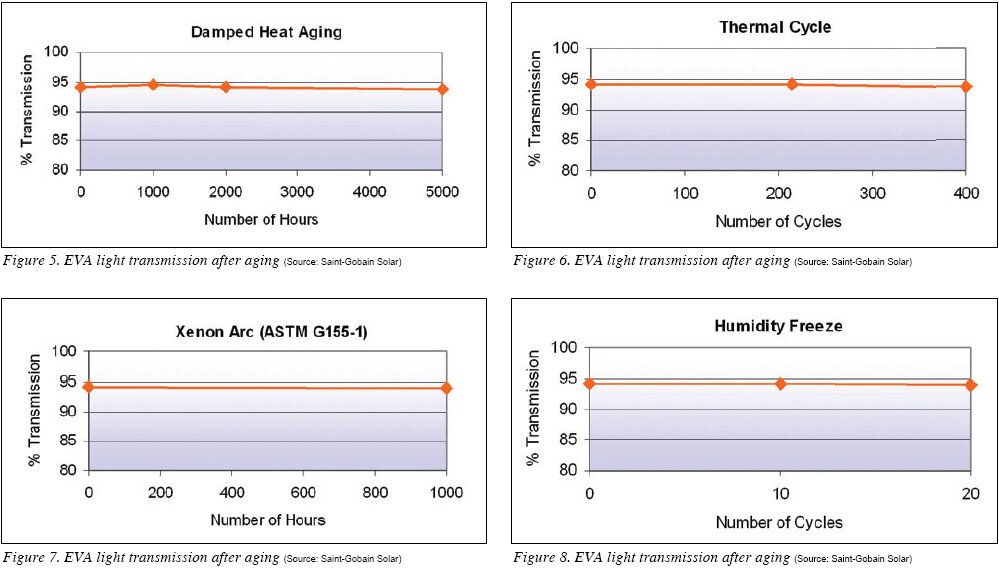By Julia DiCorleto
.jpg)
Ongoing global economic challenges in combination with the increased importance of industrial environmental stewardship have pushed the search for sustainable, yet effective energy sources into the spotlight. In the fast-paced world of alternative energy, solar power has emerged as a leading solution to the world’s energy demand issues, generating power from a power source with unique accessibility. Reliable and environmentally sound, the conversion of solar energy into electricity is now being used in many applications across the building, residential, commercial, and industrial sectors. With advanced Photovoltaic (PV) module designs, solar power can supply a considerable portion of a building’s energy needs, paying off the initial capital investment and approaching grid parity--the point at which renewable electricity is equal to or cheaper than grid power.
According to industry analysts, the commercial and residential rooftop PV markets are expected to grow over the next few years, with Building Integrated Photovoltaic (BIPV) and Building Applied Photovoltaic (BAPV) markets projected to more than double over the next three years.1) With this in mind, according to a Bloomberg report, more than 3% of commercial rooftops in the U.S. will have solar power installations by 2020. However, today’s commercial buildings are designed with little to no spare structural capacity due to cost constraints. For example, 75% of big-box warehouse construction in California is not suited for conventional solar installation due to structural limitations. In fact, most industrial properties built before the 1997 Uniform Building Code (UBC) change are not suitable for conventional rooftop solar installation without costly structural improvement.2) Rather than necessitate rooftop structural redesign, this issue has led to a trend in lighter PV module design. As a result, recent advances in materials science have led to the development of innovative new materials for lightweight Photovoltaic (PV) modules.
Unique thin-film fluoropolymer technologies, such as Ethylene-Tetrafluoroethylene (ETFE) frontsheets, Ethylene Vinyl Acetate (EVA) encapsulants, and combined pre-laminates with both ETFE and EVA, allow manufacturers to produce lightweight PV modules that provide increased performance properties, including excellent light transmission and extreme durability, as well as cost-savings to both manufacturers and end-users.
Strong Performance
Power output tops the list of key factors influencing PV module material choice. Thin-film ETFE frontsheets help manufacturers design a lightweight PV module with concrete performance benefits throughout its product lifecycle, most importantly, excellent light transmission. More transparent than conventional materials, ETFE provides higher efficiency in frontsheet applications (Figure 1). Comparing the efficiency of modules made with an ETFE with those made from glass, both the 2mil and 10mil ETFE covered modules showed a comparative increase. Due to the higher light transmission of ETFE, PV cells experience an increased amount of light resulting in higher generated power output.
For head-to-head comparisons of modules made with glass frontsheet and ETFE frontsheet, two types of modules with different frontsheets and backsheets were fabricated, while the rest of the module components were the same. The glass frontsheet and laminated backsheet of a conventional module were replaced with ETFE frontsheet and glass backsheet respectively. This change resulted in an improvement of the Maximum Power Point (MPP) measurement as shown (Figure 2), ranging from 2.5-3.2% of increased power output.

 Not far behind power output is durability. It is vital that PV module components, exposed to the elements, deliver long-lasting performance. ETFE provides superior weatherability and UV resistance, ideal for use in the design of flexible and lightweight solar modules. When exposed to hail impact tests at ice ball speeds ranging from 20 to 30m/s, ETFE did not show any visible dent to the naked eye. Not only was no failure observed after hail impact, but power output was not significantly affected by such extreme testing (Figure 3). Tough and flexible, these highly transparent films--weighing as low as 0.1 kg/m2--offer outstanding resistance to chemicals and weathering, low flammability, stress crack resistance, and insulating properties.
Not far behind power output is durability. It is vital that PV module components, exposed to the elements, deliver long-lasting performance. ETFE provides superior weatherability and UV resistance, ideal for use in the design of flexible and lightweight solar modules. When exposed to hail impact tests at ice ball speeds ranging from 20 to 30m/s, ETFE did not show any visible dent to the naked eye. Not only was no failure observed after hail impact, but power output was not significantly affected by such extreme testing (Figure 3). Tough and flexible, these highly transparent films--weighing as low as 0.1 kg/m2--offer outstanding resistance to chemicals and weathering, low flammability, stress crack resistance, and insulating properties.
Another indicator of material durability to consider is the Relative Thermal Index rating (RTI). Underwriters Laboratory (UL), a respected product safety certification group, performs tests to determine the RTI of a material--the definitive measure of long-term material durability. Determined by a thermal aging process measuring the retention of critical performance properties such as dielectric strength (electrical properties), tensile strength, and impact resistance, a high RTI rating signifies the excellent long-term thermal performance properties. An ideal choice for lightweight PV module applications, there is ETFE with an RTI of 150C, signifying excellent long-term durability for film thickness down to 1mil.
ETFE films also work well when used in tandem with other film products, such as high-quality EVA encapsulants.
.jpg)
.jpg)
EVA encapsulants allow greater light transmission, superior adhesion to frontsheet and backsheet materials for both rigid and flexible modules, and strong electrical, mechanical, and weathering properties, providing long-lasting protection for solar cells (Figure 4). An increased level of long-term weathering and UV protection is vital in extending the power-generating capabilities of any PV module exposed to the elements (Figures 5-8).
Production Efficiencies
In addition to product performance, efficient manufacturing resulting from increased production throughput can mean additional cost-savings and a major difference in overall profitability. Choosing materials that make the best use of valuable resources, including optimal energy use and reduced waste are not only good for the environment, but for the manufacturer’s bottom line.
Focusing on production efficiency to increase overall profits, manufacturers cannot afford to waste valuable materials. With that in mind, module design options can include state-of-the-art frontsheet systems that utilize the co-application of two films--ETFE frontsheet EVA encapsulant--into one. Boosting production efficiency, these select frontsheet systems do not require any alignment during the manufacturing process and offer the complete frontsheet package. One less process step, requiring time and resources, can improve overall manufacturing efficiency and increase production yield.
When used together with EVA films in high-performance frontsheet systems, ETFE films exhibit reduced wrinkling, decreasing the amount of waste due to damaged or unusable film. In addition, frontsheet systems are basically two rolls in one, further reducing packaging, shipping costs and easier inventory management.

Installation Considerations
Once packaged, shipped, and delivered, lightweight PV modules designed using ETFE and EVA film products begin providing immediate value to PV module end-users, such as integrators and installers. Lightweight modules made with thin-film components are easier to install than their heavier counterparts made with conventional materials, requiring less time to put into action. As soon as PV modules are up and running, an end-user can begin to recoup the initial investment, while generating clean and efficient power.
As previously mentioned, another key PV module consideration that has far-reaching effects on end-users is systems weight and its effect on building design and structure. Lightweight PV modules, made using thin-film products such as ETFE and EVA, are easier to install from a structural load standpoint, requiring little-to-no additional structural support. It is not uncommon for large conventional PV module installation projects to get cancelled or down-sized due to weight restrictions on the roof. In regions that experience harsh weather conditions, roofs are subjected to the weight of conventional PV modules coupled with snow and wind load, as well, adding further structural burden. Some buildings are not even considered candidates for PV module installation projects, as they were not built with the extra load capacity for conventional systems. As customer demand for more power per unit area increases, so does the burden on rooftop structure. It can be expensive and time-consuming to retrofit a rooftop. Lightweight panels made using ETFE and EVA films, coming in at roughly half the weight of conventional modules, allow installation projects to be completed as efficiently as possible, without costly modification to rooftop support structures.
As analysts predict growth in the demand for solar power, cost considerations point to lightweight modules as the future of the PV industry. Cutting-edge high-performance materials are needed to meet this demand for lightweight PV module components. Lightweight PV modules, designed with ETFE and EVA film components provide a unique combination of strong performance, durability, and steady cost-savings across the supply chain, ultimately helping end-users achieve grid parity and move solar power into the mainstream.
Julia DiCorleto is a business manager at Saint-Gobain Solar (www.saint-gobain-solar.com/eng), a worldwide leader in solar energy services. Today, Saint-Gobain is combining its traditional field of expertise, housing and construction, with its solar technology know-how. Saint-Gobain Solar reaffirms the company’s commitment to making solar energy a springboard of growth and innovation.
REFERENCES
1) 2010 Solarbuzz Market Report--Green World Scenario; EUPD; ECD Analysis
2) Bloomberg New Energy Finance Analysis--U.S. Solar Poised for US$100bn Growth Surge--Business Wire October 25, 2010
For more information, please send your e-mails to pved@infothe.com.
ⓒ2011 www.interpv.net All rights reserved.



